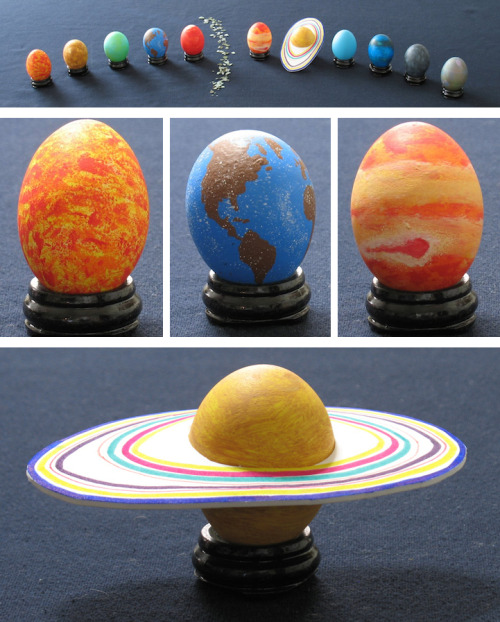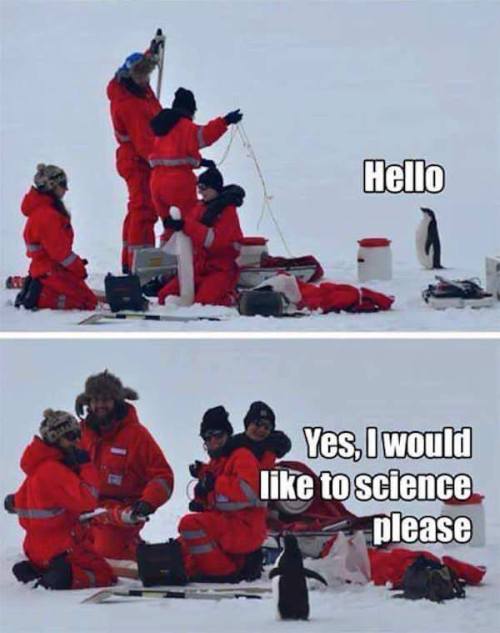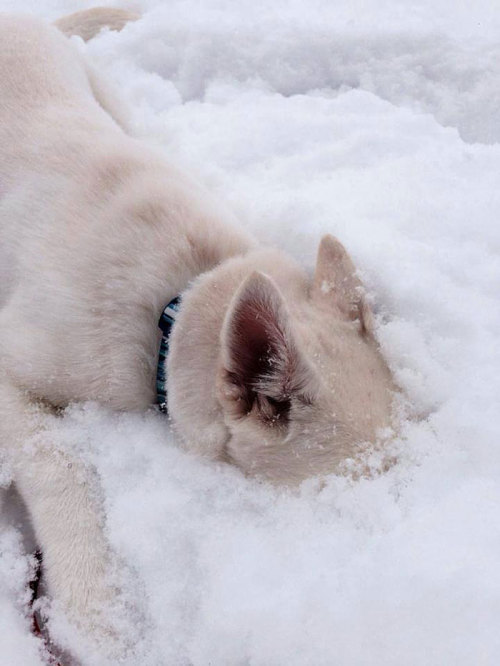Smartler - Smartler

More Posts from Smartler and Others
Submitted by @asapscience
Science is so amazing, but it’s being de-funded around the world. We hope to make a difference with this video:
Your sharing is greatly appreciated.
My “Clean” Piano Cover (Originally by Taylor Swift)










35 Creative Designs That Turn Ordinary Eggs into Eggs-traordinary Art

EVERYTIME IT’S ON MY DASHBOARD I WATCH IT AND CRY BEST VIDEO

SCIENCE WARS – Acapella Parody (VIDEO)
Which field of science is the strongest? Physics, Chemistry, Biology or Math?
We have the disciplines battle it out in our new Star Wars inspired, acapella song.









Watch: If you miss tonight’s supermoon lunar eclipse you won’t get another glimpse for a long time.









THE GIANT MANATEE NEBULA Bright astronomical objects that are visible to the eye and optical telescopes are often nicknamed for their resemblance to earthly objects. A newly discovered view of a 20,000 year old supernova remnant is no different, resembling a beloved endangered species. W50 (or the Giant Manatee Nebula) is one of the largest supernova remnants ever viewed by the Karl G. Jansky Very Large Array (VLA). This large cloud, nearly 700 light years across, formed when a giant star exploded as a supernova around 20,000 years ago, spewing its outer gases flying outwards to form an expanding bubble. The remaining super dense relic of that giant star, very likely a black hole, feeds on gas from a closeby companion star which form a disk around the black hole. This disk and the black hole’s network of powerful magnetic field lines pull out charged particles out of the disk and channel them outward in jets that travel almost at the speed of light, acting like a giant railroad system. This pairing system of a black hole and its feeder star are both known as the SS433 microquasar. Over time, this awesome image of Florida’s “sea cow” will become mishapen, as the micro quaser’s jets will force their way through the expanding gas bubble of W50, punching bulges outward on either side of it. Until then, it will continue to be another wonder in the sky while providing more clues to fill the history of this giant cloud. –Sanj SOURCE:http://www.sciencedaily.com/releases/2013/01/130119185021.htm National Radio Astronomy Observatory. “Microquasar makes a giant manatee nebula.” ScienceDaily, 19 Jan. 2013. Web. 24 Jan. 2013. Image:Left: W50 supernova remnant in radio (green) against the infrared background of stars and dust (red). A Florida Manatee rests underwater in Three Sisters Springs in Crystal River, Florida. Image Credit: Left: NRAO/AUI/NSF, K. Golap, M. Goss; NASA’s Wide Field Survey Explorer (WISE). Right: Image used with permission from Tracy Colson, courtesy of NRAO
-
 heckcareoxytwit liked this · 2 months ago
heckcareoxytwit liked this · 2 months ago -
 heckcareoxytwit reblogged this · 1 year ago
heckcareoxytwit reblogged this · 1 year ago -
 sissyjennysworld liked this · 1 year ago
sissyjennysworld liked this · 1 year ago -
 rin1sakami liked this · 3 years ago
rin1sakami liked this · 3 years ago -
 no-one-cares-except-you liked this · 4 years ago
no-one-cares-except-you liked this · 4 years ago -
 metalslvt liked this · 4 years ago
metalslvt liked this · 4 years ago -
 kdleoh reblogged this · 5 years ago
kdleoh reblogged this · 5 years ago -
 finisadragon reblogged this · 5 years ago
finisadragon reblogged this · 5 years ago -
 kittybug99 liked this · 5 years ago
kittybug99 liked this · 5 years ago -
 quartzcelticas liked this · 5 years ago
quartzcelticas liked this · 5 years ago -
 lifeasanexperiment reblogged this · 5 years ago
lifeasanexperiment reblogged this · 5 years ago -
 lifeasanexperiment liked this · 5 years ago
lifeasanexperiment liked this · 5 years ago -
 msmasquerade reblogged this · 5 years ago
msmasquerade reblogged this · 5 years ago -
 engildedalcove reblogged this · 5 years ago
engildedalcove reblogged this · 5 years ago -
 badattitudebarbie liked this · 5 years ago
badattitudebarbie liked this · 5 years ago -
 cyndynamite reblogged this · 5 years ago
cyndynamite reblogged this · 5 years ago -
 cactus-juice-for-sale reblogged this · 5 years ago
cactus-juice-for-sale reblogged this · 5 years ago -
 bluscooter liked this · 5 years ago
bluscooter liked this · 5 years ago -
 searching-for-a-quiet-room liked this · 5 years ago
searching-for-a-quiet-room liked this · 5 years ago -
 ellikanezer liked this · 5 years ago
ellikanezer liked this · 5 years ago -
 city-of-the-moon liked this · 5 years ago
city-of-the-moon liked this · 5 years ago -
 walk21myles reblogged this · 5 years ago
walk21myles reblogged this · 5 years ago -
 rawreffles reblogged this · 5 years ago
rawreffles reblogged this · 5 years ago -
 rawreffles liked this · 5 years ago
rawreffles liked this · 5 years ago -
 protectthesinnamonrolls reblogged this · 5 years ago
protectthesinnamonrolls reblogged this · 5 years ago -
 protectthesinnamonrolls liked this · 5 years ago
protectthesinnamonrolls liked this · 5 years ago -
 shipsbesailing reblogged this · 5 years ago
shipsbesailing reblogged this · 5 years ago -
 redfoxraccoon reblogged this · 5 years ago
redfoxraccoon reblogged this · 5 years ago -
 trenchcoatfullofcrows reblogged this · 5 years ago
trenchcoatfullofcrows reblogged this · 5 years ago -
 trenchcoatfullofcrows liked this · 5 years ago
trenchcoatfullofcrows liked this · 5 years ago -
 vo-kopen reblogged this · 5 years ago
vo-kopen reblogged this · 5 years ago -
 jr4cats liked this · 5 years ago
jr4cats liked this · 5 years ago -
 oxymitch-archive reblogged this · 5 years ago
oxymitch-archive reblogged this · 5 years ago -
 bug-soda liked this · 5 years ago
bug-soda liked this · 5 years ago -
 pattycakepat liked this · 5 years ago
pattycakepat liked this · 5 years ago -
 nosebleed-inglishera liked this · 5 years ago
nosebleed-inglishera liked this · 5 years ago -
 not-a-hope-in-hell reblogged this · 6 years ago
not-a-hope-in-hell reblogged this · 6 years ago -
 the-pisces-girl reblogged this · 6 years ago
the-pisces-girl reblogged this · 6 years ago -
 the-pisces-girl liked this · 6 years ago
the-pisces-girl liked this · 6 years ago -
 1-800-telekura liked this · 6 years ago
1-800-telekura liked this · 6 years ago -
 h-h-winni liked this · 6 years ago
h-h-winni liked this · 6 years ago -
 1ns3rtr34llygoodn4m3 liked this · 6 years ago
1ns3rtr34llygoodn4m3 liked this · 6 years ago -
 tresfoufou liked this · 6 years ago
tresfoufou liked this · 6 years ago -
 uhwhatdyousay liked this · 6 years ago
uhwhatdyousay liked this · 6 years ago -
 jinxylullaby liked this · 6 years ago
jinxylullaby liked this · 6 years ago